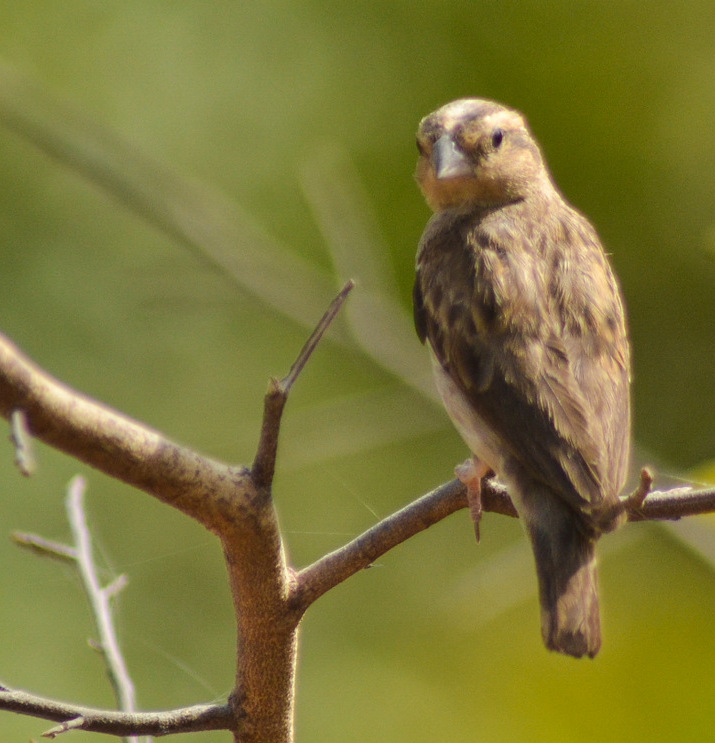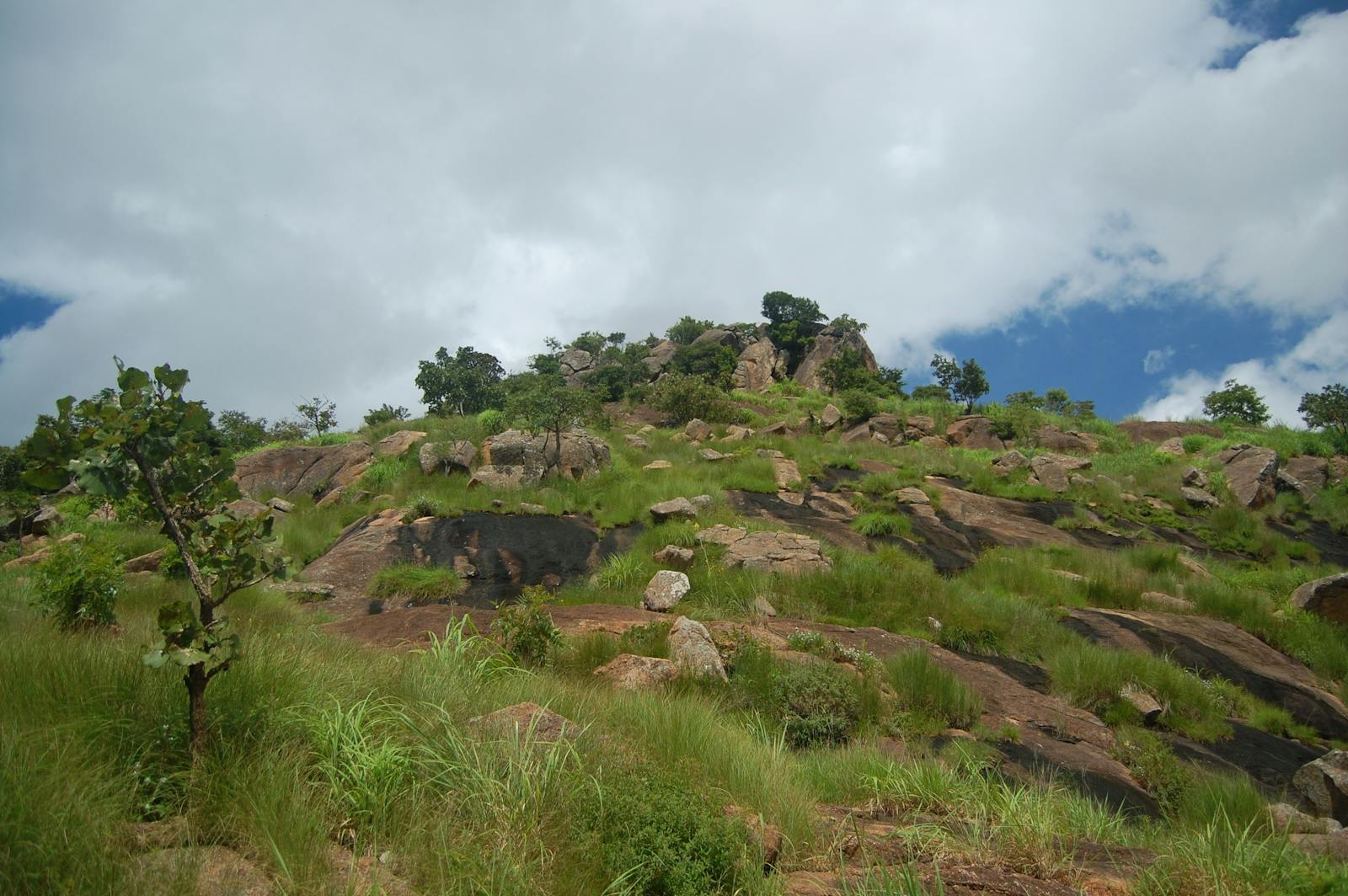Jos Plateau Forest-Grassland
The ecoregion’s land area is provided in units of 1,000 hectares. The conservation target is the Global Safety Net (GSN1) area for the given ecoregion. The protection level indicates the percentage of the GSN goal that is currently protected on a scale of 0-10. N/A means data is not available at this time.
Bioregion: West African Coastal Forests & Savanna (AT19)
Realm: Afrotropics
Ecoregion Size (1000 ha):
1,337
Ecoregion ID:
82
Conservation Target:
9%
Protection Level:
10
States: Nigeria
The benefits reaped by others has now come back to haunt those living on the Jos plateau today. The mining boom in the 1960s left over a thousand mine ponds scattered across the abandoned tin minefields in this ecoregion. Millions of inhabitants are threatened by natural radiations emitted by the radioactive by-products of tin mining. Water sources are contaminated as well as soils which are used to build houses. Today, artisanal and illegal miners still seek the deeper ores which industry abandoned due to their economic unfeasibility.
The ecoregion rises above the surrounding forest-grassland and savanna ecoregions of northern Nigeria. The Plateau is the largest landmass above 1,000 m in Nigeria. It comprises high plains about 1,300 m above sea level and a number of granite hill ranges that reach heights over 1,900 m.

The flagship species of the Jos Plateau Forest-Grassland ecoregion is the Jos plateau indigo bird. Image credit: Creative Commons
The plateau is the hydrological center of the country supporting agriculture, navigation, and commerce. The Jos Plateau is mainly comprised of granites that are part of the Precambrian Basement Complex, and which formed part of the land surface of the Gondwanan supercontinent. Temperatures on the Jos Plateau are lower than the surrounding areas, with minima of 15.5°C to 18.5°C to maxima of 27.5°C to 30.5°C.
Rainfall is around 2,000 mm in the southwestern part of the plateau, and declines to around 1,500 mm in the northeast. Average rainfall for the town of Jos is 1,411 mm per year. The heavier rains in the south and west are due to the moisture-bearing winds meeting the escarpment at this point. The watershed pattern on the Jos Plateau is unusual in that its streams drain into different larger river systems. Some streams flow northeast to Kano and Lake Chad, east to the Gongola River (which enters the Benue), south to the Benue, and west to the Kaduna River, which feeds into the Niger River.
The ecoregion is an isolated Afromontane vegetation unit within the Guinea-Congolian/Sudanian regional transition zone. Dense savanna woodland is likely to have been the climax vegetation for this ecoregion, but human activities have resulted in extensive and severe degradation.
Vegetative formations can be divided into various savanna mosaics: woodland, riparian forest, and scrub regions. Plant species such as Carissa edulis, Dalbergia hostilis, Diospyros abyssinica, Euphorbia desmondii, E. poissonii, Ficus glumosa, Rhus longipes, and Olea capensis can be found in bushland and scrub forest on the plateau. The most numerous tree species in the woodland areas are Isoberlinea doka, Vitex doniana, Lannea schimperi, and Uapaca somon.
The Jos Plateau ecoregion, though small, contains a relatively large number of endemic species. Two small mammals are strictly endemic, the Nigerian mole rat and Fox's shaggy rat. Several other mammals occur in Nigeria only on the Jos Plateau (but are also found elsewhere in Africa), including the bushveld horseshoe bat, the greater long-fingered bat, gray climbing mouse, and the West African subspecies of klipspringer. The two species of bats and the dark-eared climbing mouse are also found in the Cameroon Highlands Forests, suggesting that there may have been a faunal and climatic link between these two areas in the past.
The distribution of klipspringer is of special biogeographic interest because this is the only West African population. With the exception of some small, isolated populations in Central African Republic, the Nigerian klipspringers are separated by about 3,000 km from the nearest East African population, and much of that intervening habitat is not suitable for them, as they exclusively inhabit rocky outcrops and inselbergs. Two endemic birds occupy the Jos Plateau, the rock firefinch and its brood-parasite, the Jos Plateau indigobird. The Adamawa turtle dove also occurs, further indicating affinities with the Cameroon Highlands Forests.
Presently, only a few remnants of woodland remain, and these are restricted to the steep and less accessible margins of the plateau, with open grassland occupying the remainder of the plateau. Forests are limited to the southern and western escarpments, river edges, and along the base of rocky outcrops. Native trees are largely absent in most human inhabited areas, except for an occasional sacred grove. There are many forest reserves protecting parts of the ecoregion including Jarawa hill, Panshanu, Jauro River, Guram River, and Limoro.
Agricultural activities are intense, particularly in areas located over basalt rock where the soil is more fertile and well suited for crops, such as potatoes, that cannot be grown in most other parts of Nigeria. A large area of farmland is degrading; nutrient depletion and soil erosion are major threats to cultivation. An estimated 3% of land area is so affected it can no longer be cultivated and 31% suffers from serious erosion. An additional threat is from the water obtained from streams or ponds made during the opencast tin mining which is tainted by radioactive by-products. Firewood collection is intense and has resulted in the removal of most trees.
The priority conservation actions for the next decade will be to: 1) establish further protected areas; 2) promote sustainable agricultural land management technologies; and 3) monitor illegal mining activities and implement land remediation and restoration initiatives.
Citations
1. Burgess, N., Hales, J.A., Underwood, E., Dinerstein, E., Olson, D., Itoua, I., Schipper, J., Ricketts, T. and Newman, K. 2004. Terrestrial ecoregions of Africa and Madagascar: a conservation assessment. Island Press.
2. Government of Nigeria. 2015. National Biodiversity Strategy and Action Plan 2016-2020. Nigeria: Federal Ministry of Environment.
3. Yila, O.M. and Thapa, G.B. 2008. Adoption of agricultural land management technologies by smallholder farmers in the Jos Plateau, Nigeria. International journal of agricultural sustainability. 6(4), pp.277-288.
4. Merem, E.C., Twumasi, Y., Wesley, J., Isokpehi, P., Shenge, M., Fageir, S., Crisler, M., Romorno, C., Hines, A., Hirse, G. and Ochai, S. 2017. Assessing the Ecological Effects of Mining in West Africa: The Case of Nigeria. International Journal of Mining Engineering and Mineral Processing. 6(1), pp.1-19.





